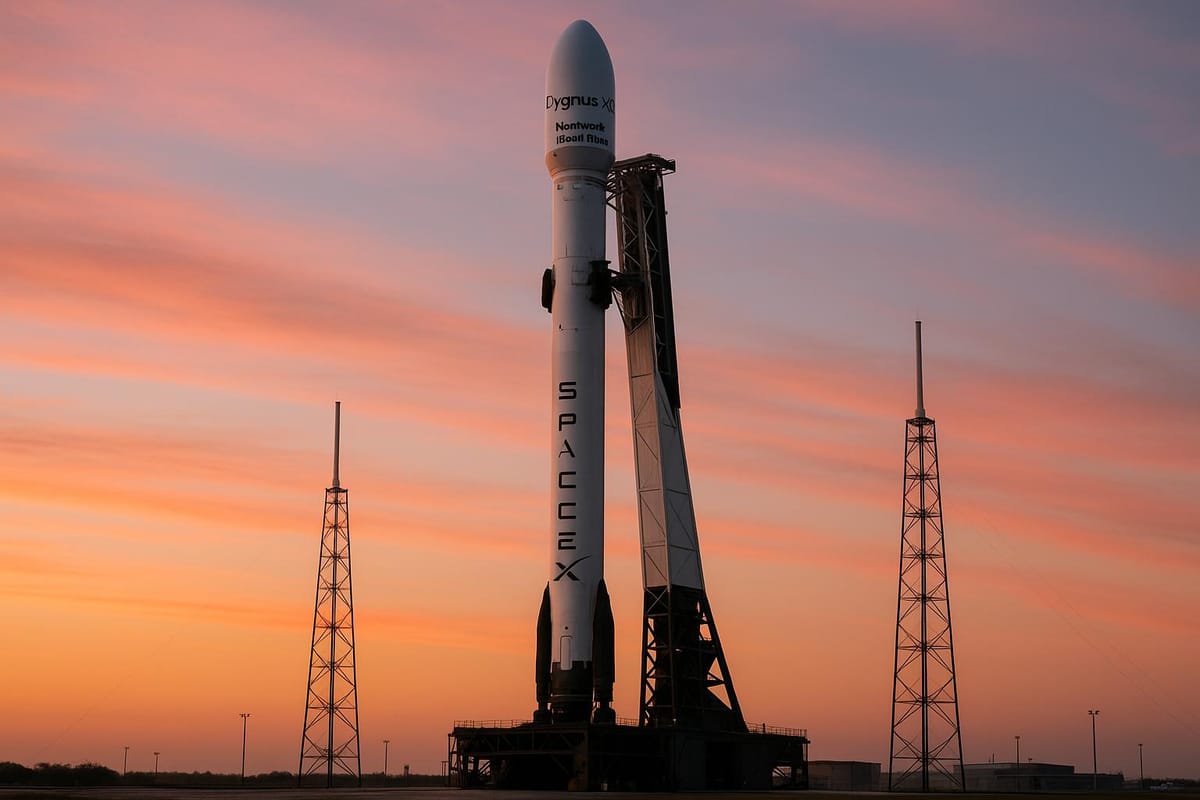SpaceX to launch Northrop Grumman's largest-ever cargo ship today
SpaceX to launch Northrop Grumman's Cygnus XL on Sept 14, carrying ~4,990 kg to the ISS; stays until March 2026.

SpaceX is preparing to launch Northrop Grumman's largest cargo spacecraft to date, the Cygnus XL, this evening. The mission, named NG-23, marks the 23rd resupply mission Northrop Grumman has undertaken for NASA. The upgraded Cygnus XL spacecraft boasts a 29% increase in cargo capacity compared to its predecessors, demonstrating a significant leap in resupply capabilities. The launch is scheduled for 6:11 p.m. EDT (3:41 a.m. IST, the following day) from Cape Canaveral.
A mission packed with critical equipment
The Cygnus XL is carrying an impressive payload of over 4,990 kilograms of equipment for a variety of scientific endeavors. Included in this cargo are tools for advancing semiconductor crystal growth in space, innovations for improving cryogenic fuel tanks, materials for pharmaceutical research, and a specialized UV light system designed to eliminate microbial communities from water systems. This mission underscores the growing importance of space-based research to solve challenges on Earth and beyond.
The spacecraft is named in honor of Columbia astronaut William "Willie" McCool, paying tribute to his contributions and legacy in space exploration.
Arrival and duration at the International Space Station
Once launched, the Cygnus XL is set to arrive at the International Space Station (ISS) on September 17 at approximately 6:35 a.m. EDT (4:05 p.m. IST). Upon its arrival, it will be captured by the station’s Canadarm2 robotic arm for attachment to the ISS.
The cargo ship will remain docked to the station until March 2026, providing ample time to utilize its payload for scientific purposes. Unlike SpaceX’s reusable Dragon capsule, the Cygnus is a single-use spacecraft. After completing its mission, it will burn up in Earth's atmosphere as part of its planned disposal.
This mission showcases advancements in space technology as well as the ongoing collaboration between SpaceX, Northrop Grumman, and NASA, further pushing the boundaries of what can be achieved in space exploration and research.
Comments ()